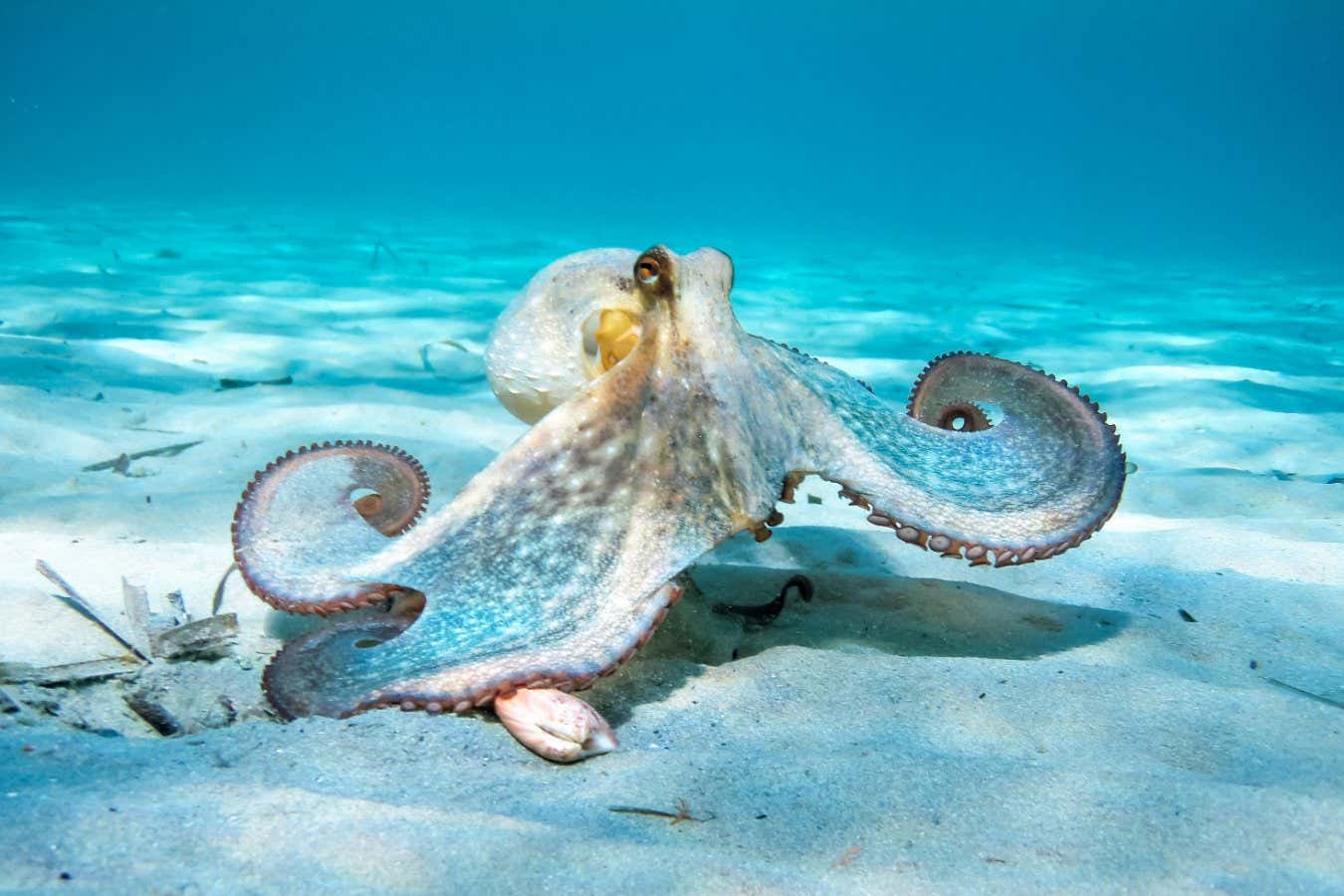The ink could one day be used to provide automatic camouflage by turning green in forests and sand-coloured in deserts
By Alex Wilkins
17 May 2023
Octopuses can change colour to match their surroundings
Nikos Stavrinidis/500px/Getty Images
An ink that changes colour when exposed to light, like an octopus does to match its surroundings, could one day be used for automatic camouflage.
Most colour-changing inks and materials use chemical reactions, but these can be unstable and difficult to control. Instead, octopuses use special muscles to push coloured ink particles to the surface of their skin.
Now, Jinyao Tang at the University of Hong Kong and his colleagues have developed an ink that can similarly display different colours by moving dyed particles in response to light exposure. The ink is made up of particles of titanium dioxide, each with different dyes and varying light responses, arranged in a solution.
Advertisement
When light from a standard projector is shone on material containing the ink, a chemical gradient causes some ink particles to rise to the surface and others to fall. “Like with oil and water, [the particles] separate and float to the top, and that is because they’re coloured,” says Tang. “You can change their colours accordingly and they mimic whatever the colour you’re actually shooting on them.”
Read more:
Ink filled with secret molecules can hide encryption key in a letter
Tang and his team formulated their ink with three colours – cyan, magenta and yellow – used in the common CMY colour scheme. They then used a modified projector to display semi-permanent images, such as children’s paintings, using the ink. They found that the images stayed stable for around half an hour before the ink remixed.
